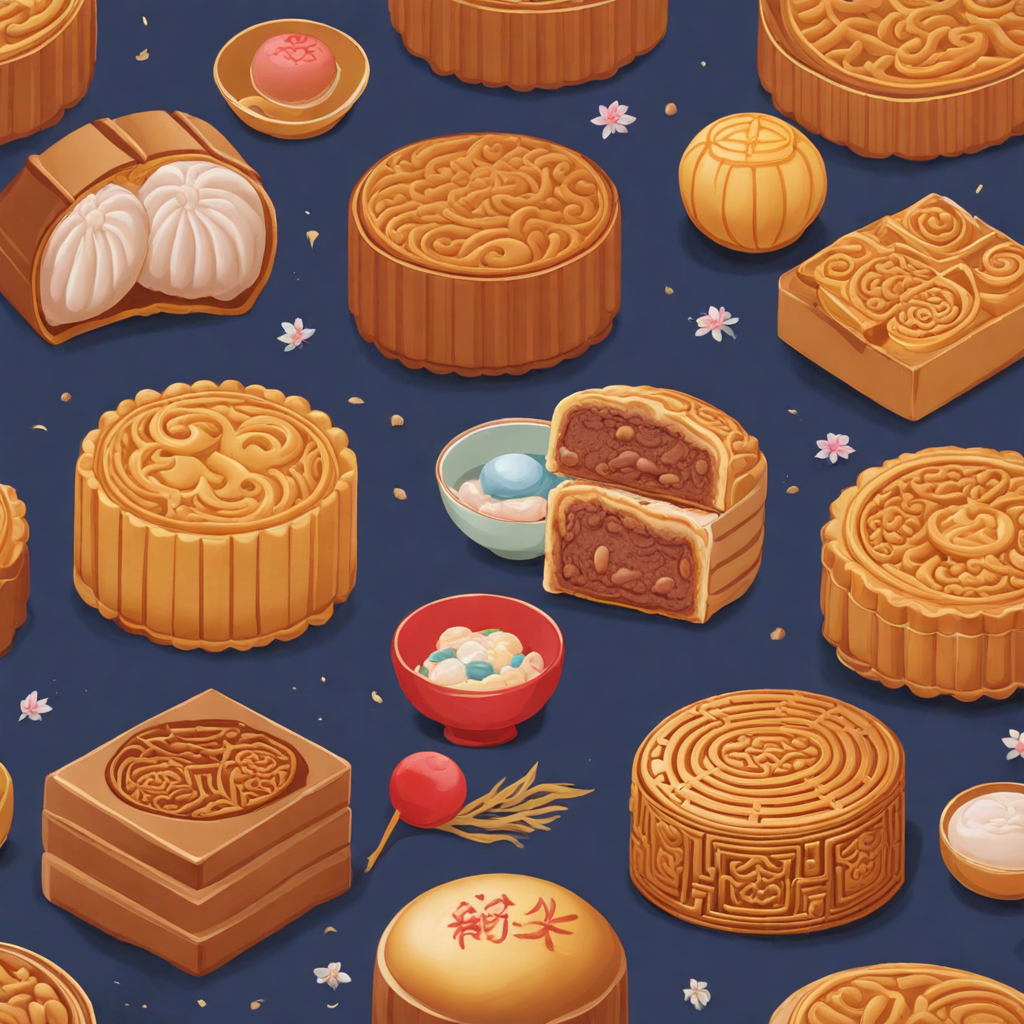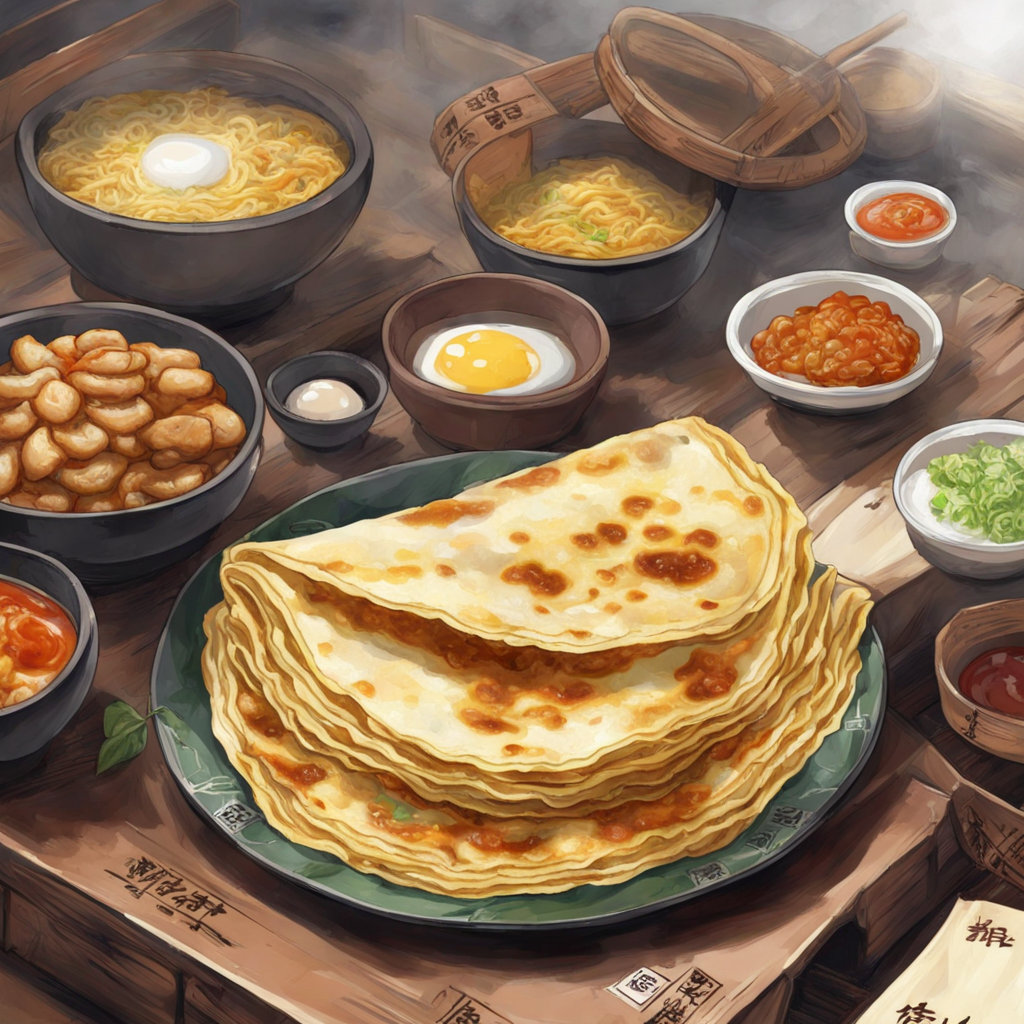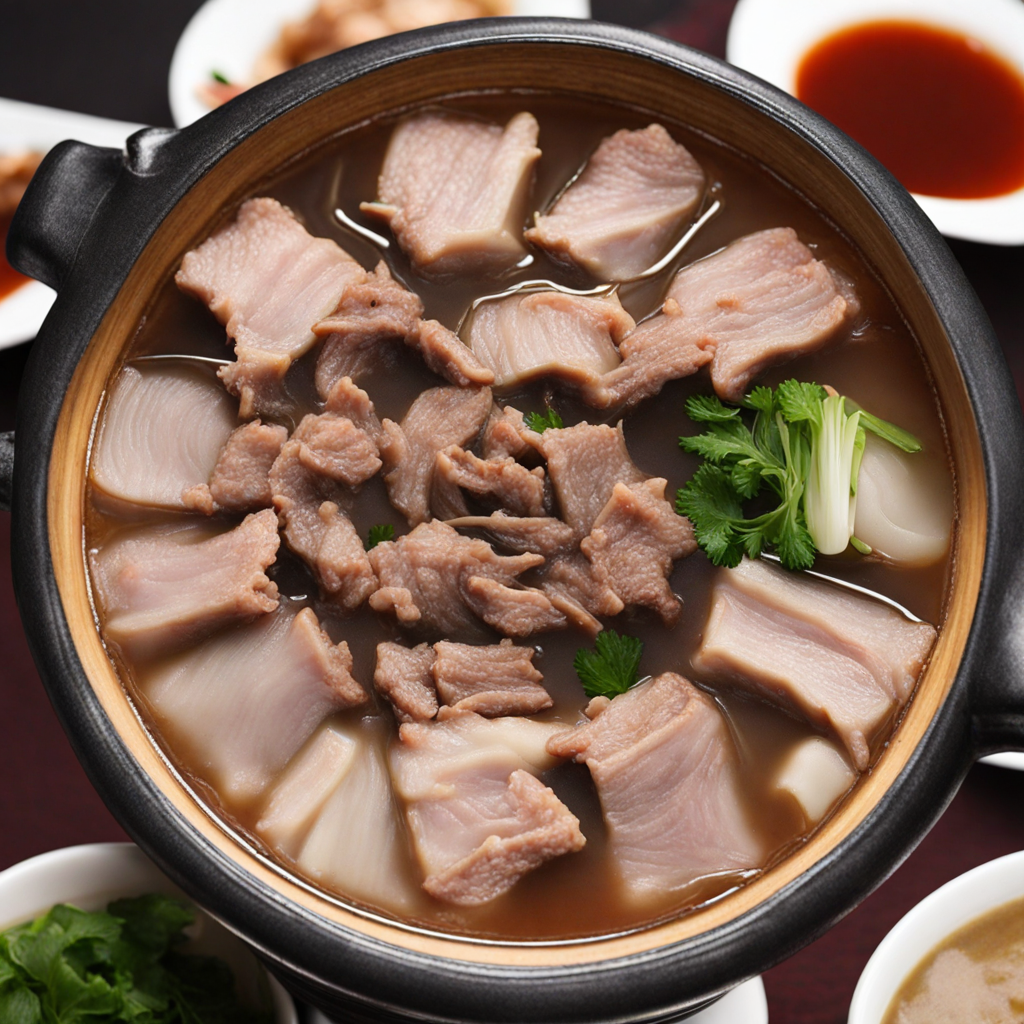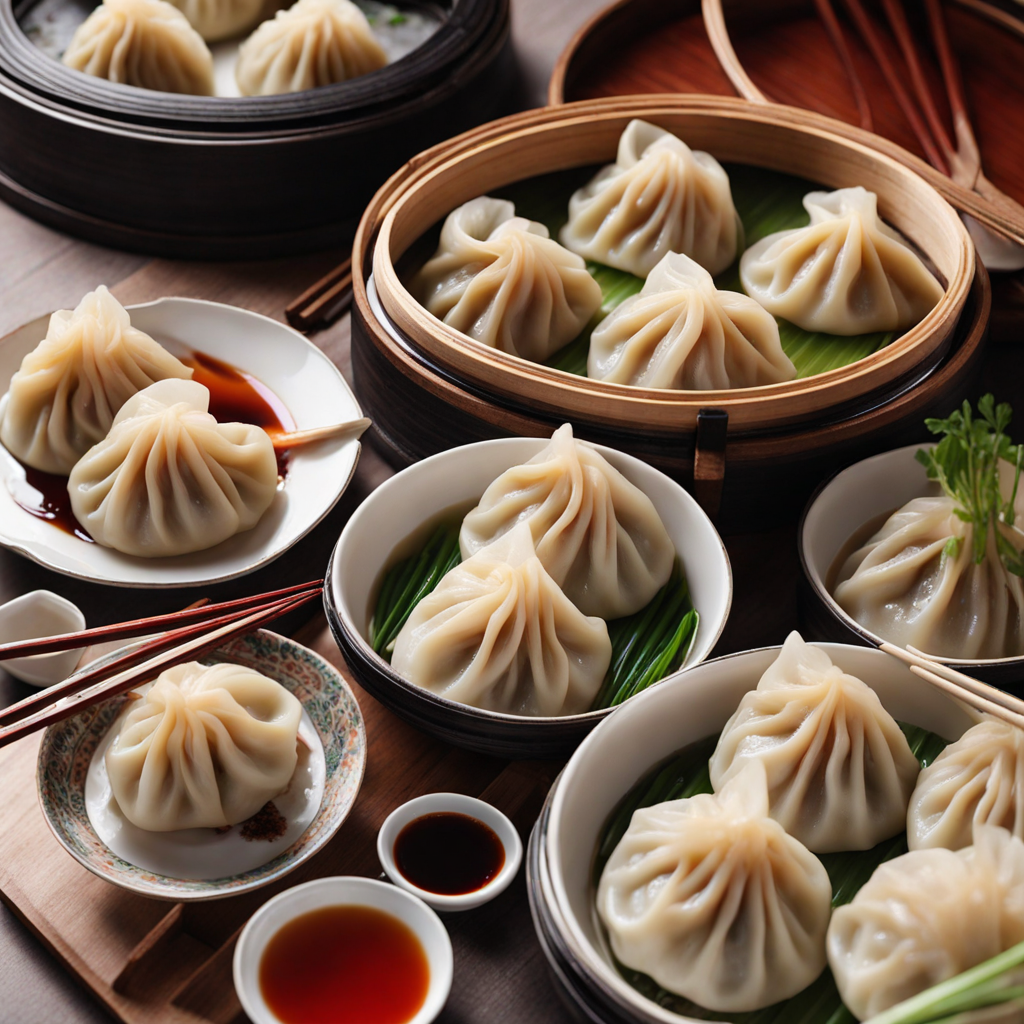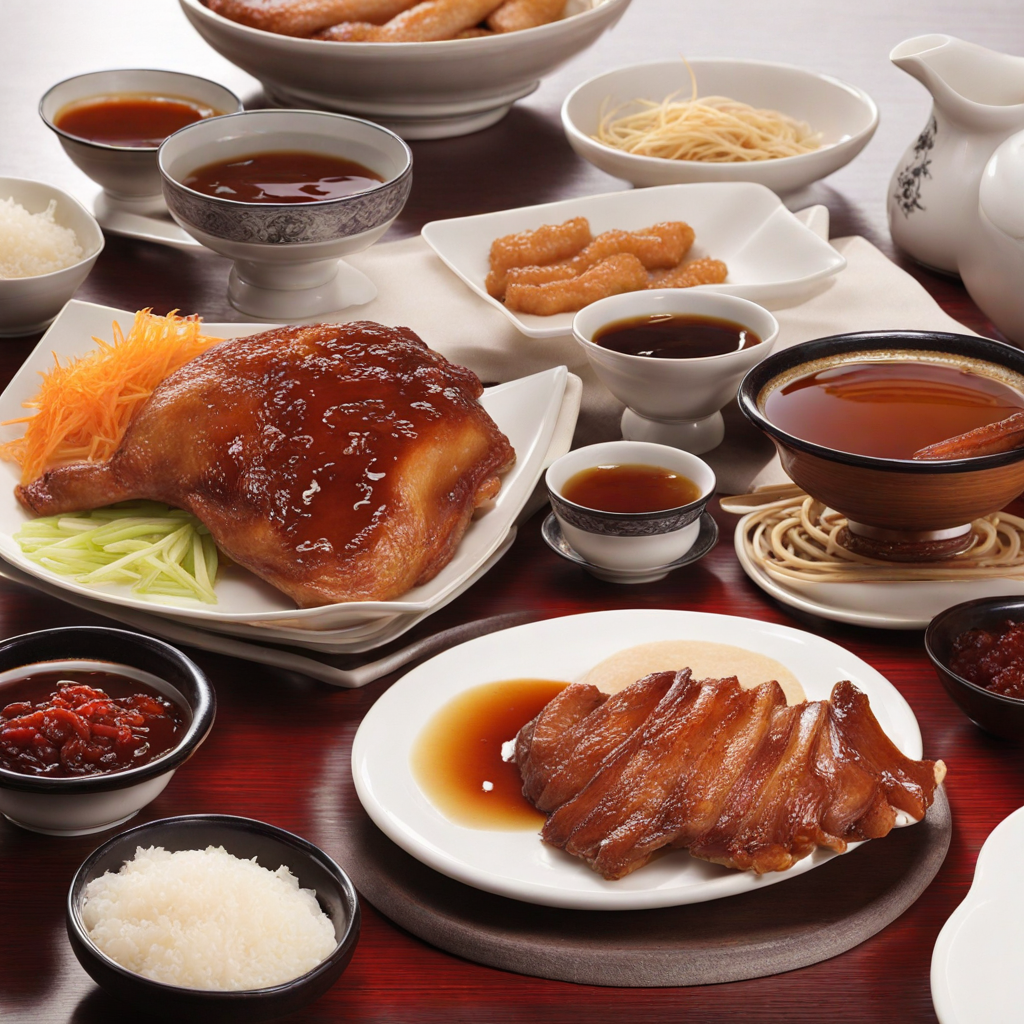Mooncake
Mooncake is a traditional Chinese pastry that is most commonly enjoyed during the Mid-Autumn Festival, a celebration of the harvest and the full moon. These round or square cakes are beautifully crafted, typically with a golden-brown crust that encases a variety of rich fillings. The most popular fillings include lotus seed paste, red bean paste, and salted egg yolks, but modern interpretations may incorporate flavors like matcha, chocolate, and even ice cream, expanding the palates of adventurous eaters. The textures range from soft and chewy to creamy and dense, creating a delightful contrast with each bite. The artistry of mooncakes extends beyond their taste; they are often intricately stamped with symbols that represent good fortune, longevity, and unity. Traditionally, mooncakes are enjoyed with tea, enhancing the experience as the bitterness of the tea complements the sweetness of the pastry. The ritual of sharing mooncakes among family and friends signifies unity and prosperity, making it a cherished treat during the festival. As part of the celebration, it is customary to cut the mooncake into wedges, allowing everyone to partake in the delicious tradition. The flavors and fillings of mooncakes can vary widely depending on regional specialties and personal preferences. For instance, in southern China, you might find more flaky and buttery crusts, while northern varieties often have a denser texture. The unique combination of flavors and textures, along with the cultural significance behind them, makes mooncakes a fascinating culinary experience. Whether you enjoy them fresh or chilled, the taste of mooncake offers a harmonious blend of sweetness and tradition that transports you to the heart of Chinese culture.
How It Became This Dish
The Enigmatic History of 月饼 (Yuebing): A Culinary Treasure of China Origins: The Birth of a Tradition The mooncake, known as 月饼 (yuebing) in Mandarin, is a pastry deeply rooted in Chinese culture, particularly associated with the Mid-Autumn Festival, also known as the Moon Festival. This festival, celebrated on the 15th day of the 8th month of the lunar calendar, dates back over 3,000 years to the time of the Shang Dynasty (1600–1046 BC) when it was originally a harvest celebration. It was during the Tang Dynasty (618–907 AD) that mooncakes began to take on their modern form and significance. The earliest recorded mention of mooncakes appears in the writings of poet Su Shi from the Song Dynasty (960–1279 AD), who celebrated the moon’s beauty and its connection to love and family reunion. The importance of the moon in Chinese culture, symbolizing unity and completeness, laid the foundation for the mooncake as a culinary symbol of family togetherness. Cultural Significance: A Symbol of Reunion and Harmony The Mid-Autumn Festival is a time when families gather to admire the full moon, enjoy the beauty of the autumn harvest, and partake in the sharing of mooncakes. Traditionally, mooncakes are round, symbolizing completeness and reunion, and are often filled with various pastes made from lotus seeds, red beans, or nuts. The act of giving mooncakes is steeped in symbolism, representing the wish for family unity and prosperity. The festival also has historical significance tied to the overthrow of the Mongol rulers during the Yuan Dynasty (1271–1368 AD). Legend has it that revolutionaries used mooncakes to communicate their plans to rise against the rulers. Secret messages were hidden within the cakes, allowing the conspirators to plan a successful revolt against the Mongolian regime. This story added a layer of intrigue to the mooncake's significance, intertwining it with notions of resistance and patriotism. Development: Evolution of Ingredients and Styles Over the centuries, the making of mooncakes has evolved, reflecting changes in society, tastes, and ingredients. By the Ming Dynasty (1368–1644 AD), mooncakes had become a staple of the Mid-Autumn Festival, with new fillings and styles emerging. Traditionally, there are two main types of mooncakes: Cantonese-style and Suzhou-style. Cantonese mooncakes, which originated from Guangdong province, are the most widespread and commercially popular. They feature a thin, tender crust and are filled with sweet pastes such as lotus seed or red bean, often containing salted egg yolks to symbolize the full moon. On the other hand, Suzhou-style mooncakes are characterized by their flaky crust and are often filled with a mix of sweet and savory ingredients. These mooncakes are also renowned for their intricate designs and artistry, reflecting the craftsmanship of their makers. In modern times, the advent of globalization and innovation has led to the development of an array of new flavors and styles. Today, one can find mooncakes filled with ingredients ranging from chocolate and green tea to ice cream, catering to diverse palates and preferences. The rise of health consciousness has also prompted the introduction of low-sugar and vegetarian options, ensuring that the tradition remains relevant in contemporary society. Regional Variations: A Tapestry of Flavors China's vastness means that mooncakes vary significantly from region to region. In addition to the well-known Cantonese and Suzhou styles, there are other notable variations. For instance: - Beijing-style mooncakes are typically larger and have a thicker crust, often filled with sweet red bean or jujube paste. - Hakka mooncakes are smaller and feature a unique combination of sweet and savory fillings, showcasing local ingredients and flavors. - Yunnan-style mooncakes incorporate local nuts and fruits, reflecting the rich biodiversity of the region. The diversity of mooncake styles illustrates how this humble pastry has adapted to regional tastes and ingredients, weaving a rich tapestry of flavors across China. Modern Innovations: Embracing Change As the world becomes increasingly interconnected, mooncakes have transcended their traditional boundaries. In urban centers across the globe, bakeries and restaurants have begun to experiment with innovative fillings and contemporary designs. Mooncakes filled with matcha, durian, and even champagne have emerged, appealing to younger generations and non-Chinese communities alike. The packaging of mooncakes has also undergone a transformation, with luxurious and artistic presentations reflecting the high value placed on gifting during the festival. Elaborate gift boxes adorned with cultural motifs have become popular, making mooncakes not just a culinary treat but also a symbol of prestige and sophistication. Moreover, the rise of e-commerce has revolutionized the way mooncakes are marketed and sold. Online platforms allow consumers to explore a vast array of options, including artisanal and gourmet mooncakes, enhancing accessibility and convenience. This shift has also facilitated the globalization of the Mid-Autumn Festival, with celebrations now taking place in various countries, showcasing the cultural significance of mooncakes beyond China. Conclusion: The Timeless Allure of Mooncakes The history of mooncakes is a fascinating journey that reflects the evolution of Chinese culture, society, and culinary practices. From their origins as symbols of reunion and harvest to their modern incarnations as innovative culinary creations, mooncakes encapsulate the essence of the Mid-Autumn Festival. They serve not only as a delicious treat to be shared among family and friends but also as a reminder of cultural heritage, unity, and resilience. As we continue to celebrate the Mid-Autumn Festival, mooncakes remain a beloved tradition, bridging generations and transcending cultural boundaries. Whether enjoyed in their traditional forms or reimagined with contemporary twists, mooncakes are a reminder of the beauty of culinary history, the significance of sharing, and the timeless allure of food as a medium of connection and celebration.
You may like
Discover local flavors from China


